
Early Bird Offer! Free tickets to meet independent experts at this summer's Build It Live
Save £24 - Book Now!
Early Bird Offer! Free tickets to meet independent experts at this summer's Build It Live
Save £24 - Book Now!Adding convenience, energy efficiency and customisation to living spaces, it’s no surprise that the demand for smart home solutions, including smart lighting, has surged in recent years. The ability to control lighting remotely, as well as integrate it with different automation systems, makes smart lighting a top choice for tech-savvy self builders and home renovators.
Advances in technology mean this technology is more accessible, too. The drive to futureproof homes with adaptable technology has made smart solutions a mainstream essential in modern homes. “One of the biggest advantages of modern smart lighting systems is their user-friendliness. Solutions like Lutron and Control4 are designed with simplicity in mind,” says Mia Menzies, project manager at Hestia Smart Living.
“Homeowners can control their lights through intuitive apps on their smartphones, touchscreens installed throughout the home, or even through voice commands via smart assistants like Alexa or Google Home. We ensure that the setup and interface are easy to navigate, even for those who aren’t tech-savvy.”
Smart lighting systems go beyond basic illumination, providing a simplified infrastructure for homeowners that’s both practical and efficient. One of the standout features is flexibility – meaning that managing lighting is straightforward, even when no one is home, and it can be automated with simple schedules throughout the day.
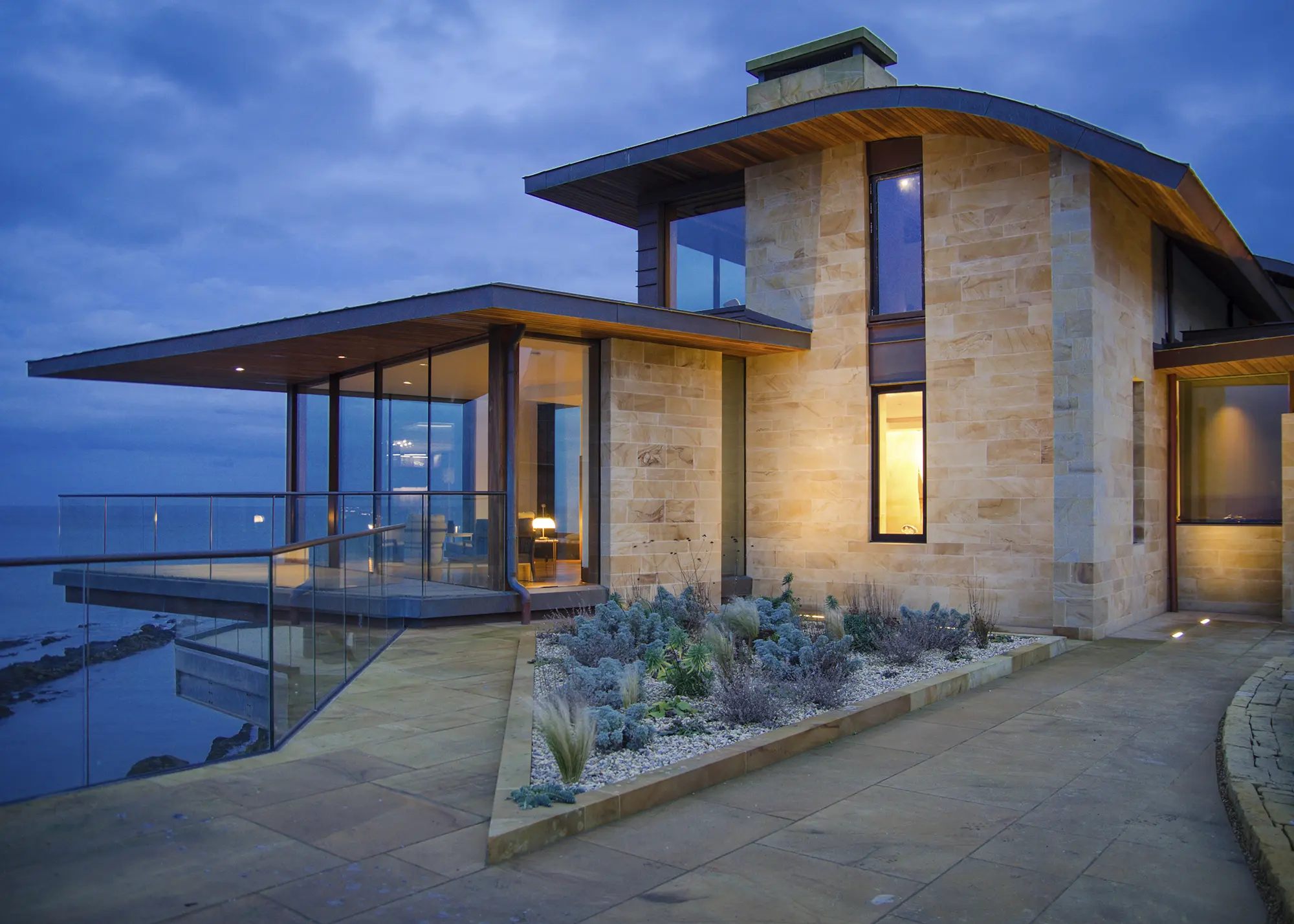
This award-winning new build features a smart lighting system, by Sigma Design, that adapts to natural daylight patterns. The circadian lighting shifts from warm hues in the evening to daylight tones in the morning, all synchronised to an astronomical clock for comfort
Smart lighting also promotes efficiency; dimmable lights, motion sensors and programmable controls all optimise energy usage. “Smart lighting systems offer remarkable benefits in energy efficiency and design flexibility by seamlessly integrating with other home automation elements, such as heating, ventilation and shading,” says Paul Foulkes, UK country manager at Theben Automation.
“When implemented as part of a whole-house setup, smart lighting enhances efficiency by creating coordinated scenes that respond to factors like occupancy, daylight levels and temperature. For instance, presence detectors don’t just turn lights on when someone enters a room; they also inform the heating system about who’s home, ventilation systems about humidity, and shading systems about light levels.”
In terms of customisation, users can set up unique lighting scenes to match different activities or moods. For instance, with one touch you can switch from a warm, dimmed scheme for a cosy movie night to a brighter, more dynamic scene for entertaining guests.
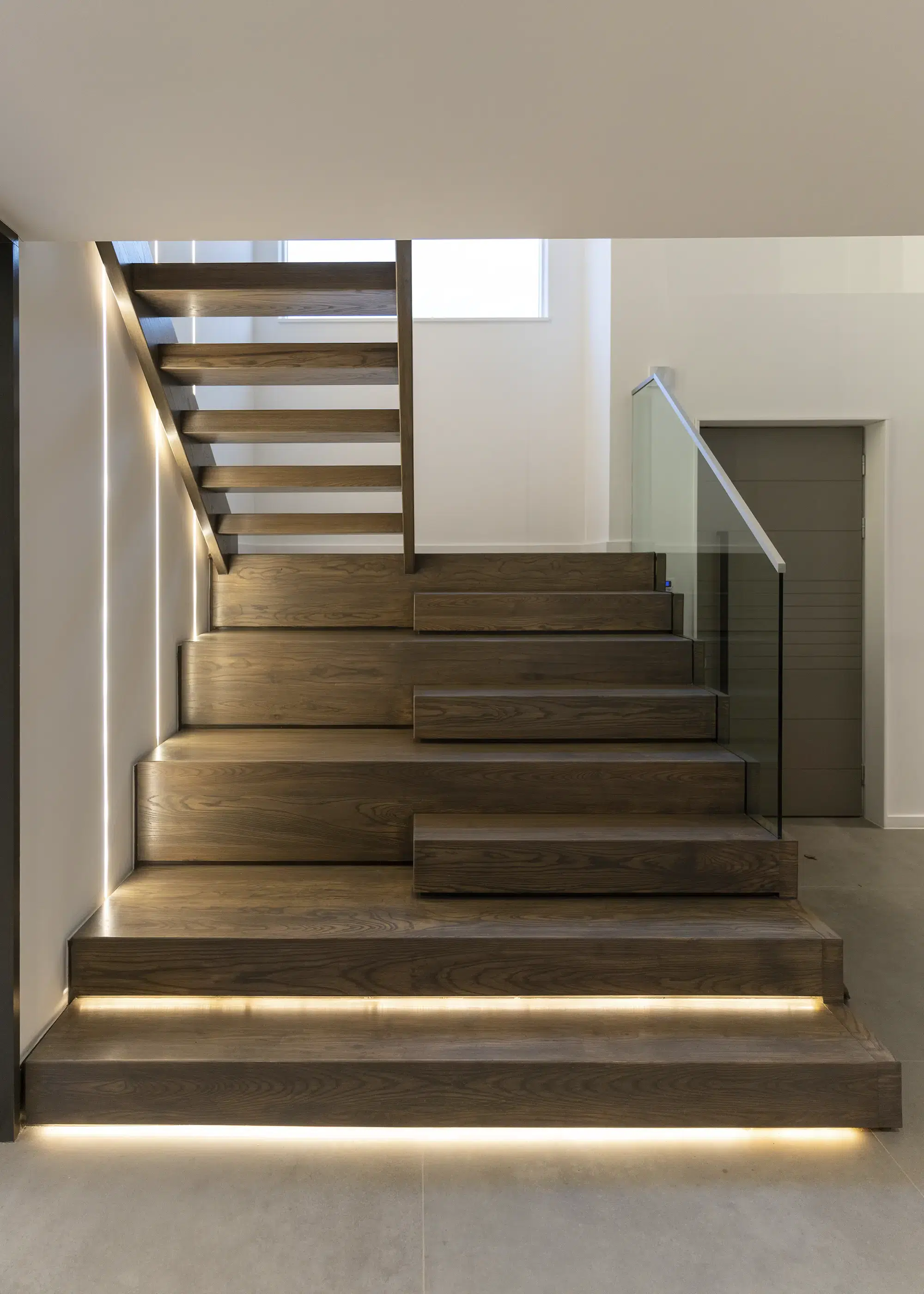
Hestia Smart Living created a bespoke interior design package for this home in Cheshire. An efficient smart lighting, audio and visual scheme was implemented, with remote access from across the property via touchpads
Modern smart lighting systems go way beyond simple dimming, they adapt to human-centric factors, like seasonal light cycles, weather patterns, circadian rhythms and movement within spaces, making them particularly effective for health and productivity. “Energy savings of up to 80-90% are possible when smart lighting systems use advanced PIR sensors to adjust artificial lighting based on natural daylight,” says Paul.
“The flexibility of smart lighting is equally impressive, especially with systems such as DALI-2. Through an app or control software, users can reassign individual lights, sensors, and switches into different groups or zones without the need to rewire.”
This is particularly advantageous in spaces with changeable layouts, such as open-plan kitchen and living areas. Here, smart lighting can provide a unique, tailored experience that meets both individual lifestyle preferences and energy saving goals.
For new builds and home improvement projects, there are three infrastructure options for smart lighting systems. Hardwired solutions are the go-to choice for new builds or major renovations, allowing cabling to be embedded within the walls for reliable, long-term performance. Wireless systems can be ideal for existing homes, enabling quick retrofitting without the challenge of getting cables where they need to be without extensive construction works.
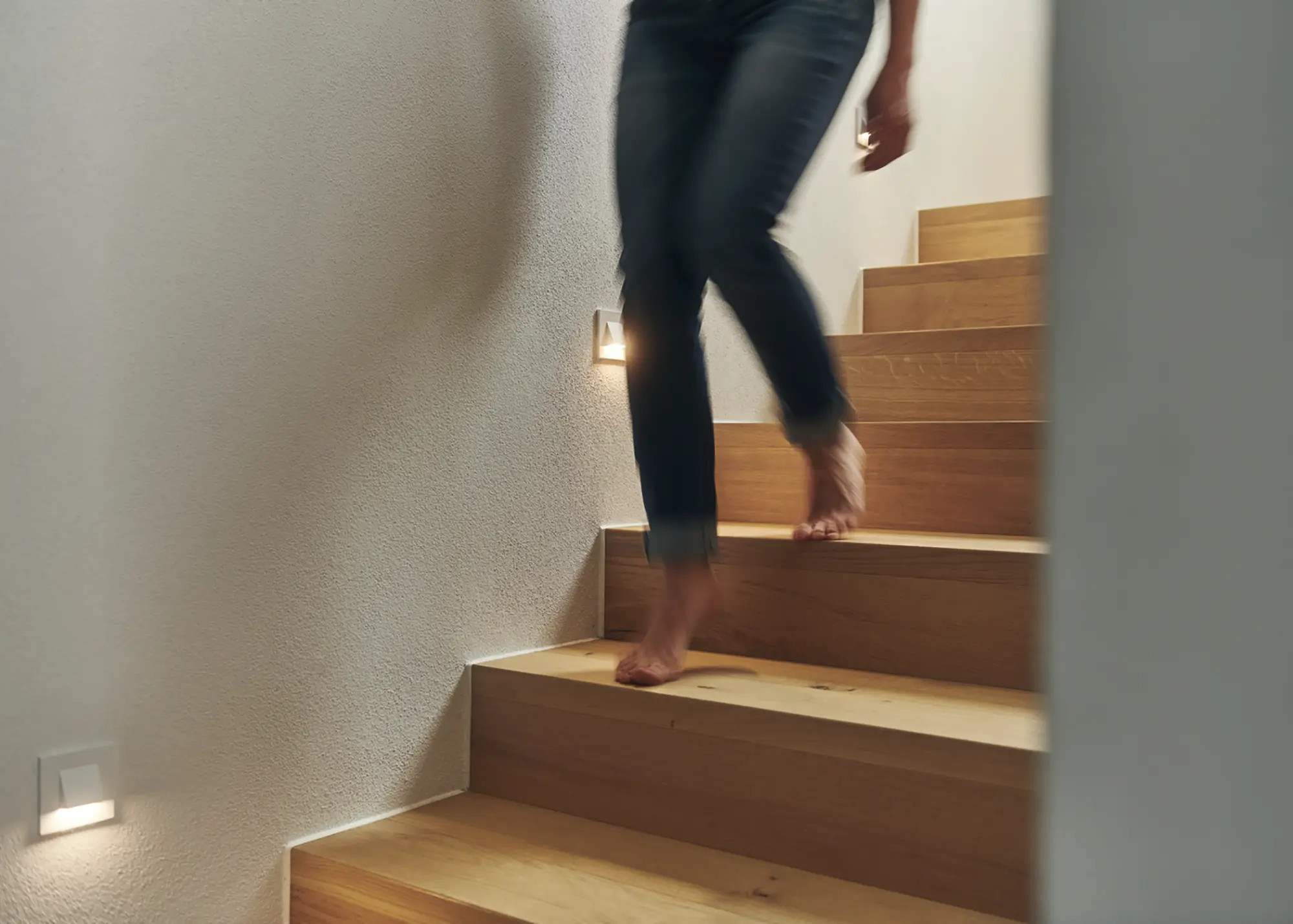
Alongside motion detectors, LED lights can help to save energy and increase comfort and safety – like this low-level staircase lighting by Theben
Wireless options typically operate through Wi-Fi, Bluetooth, or dedicated hubs. Finally, hybrid solutions, which combine both hardwired and wireless components, provide flexibility to tailor the setup based on each home’s layout and needs. “Smart lighting systems come in a myriad of styles, with varying complexities and costs associated with them,” says Nic Black, managing director at Sigma Design.
“Hard wired lighting will always be robust in terms of its connectivity and therefore reliability. Wireless solutions have come a long way in recent years, however, and options include everything from simple RF transmission to mesh technologies such as Zigbee or Casambi (Bluetooth) and, if planned properly, can be very reliable.”
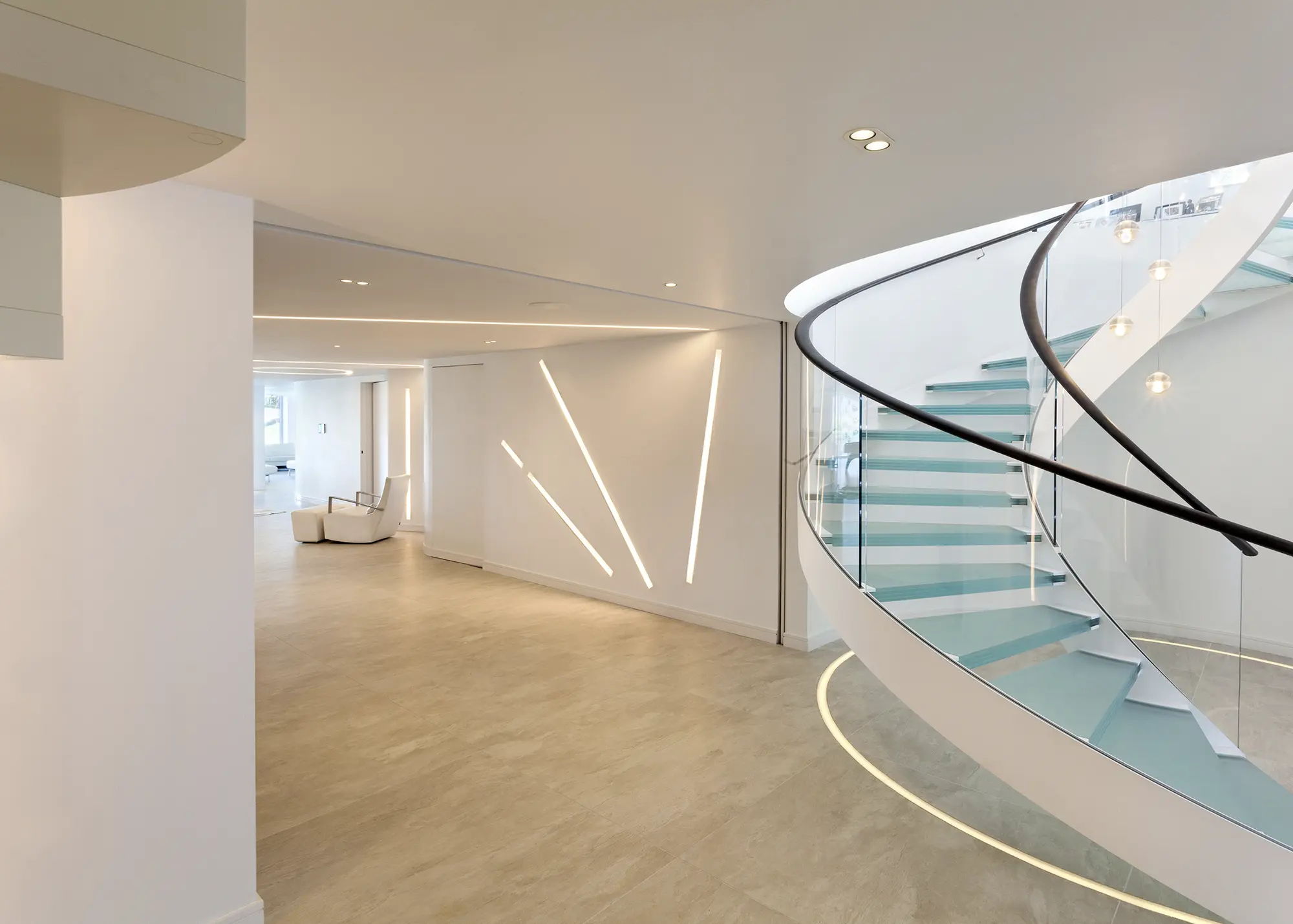
As part of this stunning modern home in West Yorkshire, Brilliant Lighting integrated Lutron HomeWorks QS to offer intuitive control of the multi-layered lighting across large open- plan spaces
It’s worth noting that many setups are part of a family of interconnected products, allowing users to control various elements like lighting, door locks, blinds and garage doors from a single platform. As the market advances, manufacturers are increasingly enabling these devices to work together seamlessly.
If you’re aiming for advanced setups, such as triggering lighting scenes when starting a movie or activating outdoor illumination when the smart security system detects movement, a comprehensive approach is essential. “What’s most important with technologies like this is to ensure you get expert advice before designing a system,” says Nic. “The complexity of integrating smart technology into a home environment presents potential pitfalls that a specialist can avoid.”
Smart lighting can transform how we use and experience the different spaces in our homes. From creating a good working environment to enhancing security and supporting daily routines, the best setups will adapt to meet your needs. “Smart lighting systems, such as those we install using market leading brands like Lutron and Control4, offer incredible flexibility in tailoring lighting to suit the unique functions of each room,” says Mia.
“For workspaces, we can design lighting schemes that boost concentration and productivity, using cooler, brighter lighting to create an energising environment. In contrast, relaxation areas such as living rooms or bedrooms can have warmer, dimmed lighting for a more calming atmosphere.”
Beyond ambiance, smart lighting is a powerful security tool. Presence simulation can mimic typical lighting patterns when homeowners are away, giving the impression that someone is there – an effective deterrent for potential intruders. “Additionally, integrating motion sensors allows the lights to turn on automatically when movement is detected, either inside or outside the home. This feature enhances safety while ensuring areas like hallways and outdoor spaces are well-lit whenever needed, without wasting energy,” says Mia.

This Theben smart lighting install enhances security and safety, while make your outdoor space more comfortable to use – all without the harshness of standard floodlights
One of the biggest advantages of smart lighting is its ability to align with daily routines. Homeowners can set their lights to gradually brighten in the morning, mimicking natural sunlight for a gentle wake-up. In the evening, lights can dim automatically, setting a relaxed ambiance to help wind down.
“With smart systems like Control4, you can program custom schedules that align with your routine, and these can be adjusted seasonally or whenever your schedule changes,” says Mia. “It’s all about creating the perfect lighting environment that adapts to your individual lifestyle.”
Outdoors, smart lighting can transform gardens, terraces, and pathways into both functional and aesthetic places. Motion-triggered low-level orientation lights, for instance, can illuminate paths without the harshness of floodlights, making outdoor areas safer and more usable without disrupting the atmosphere.
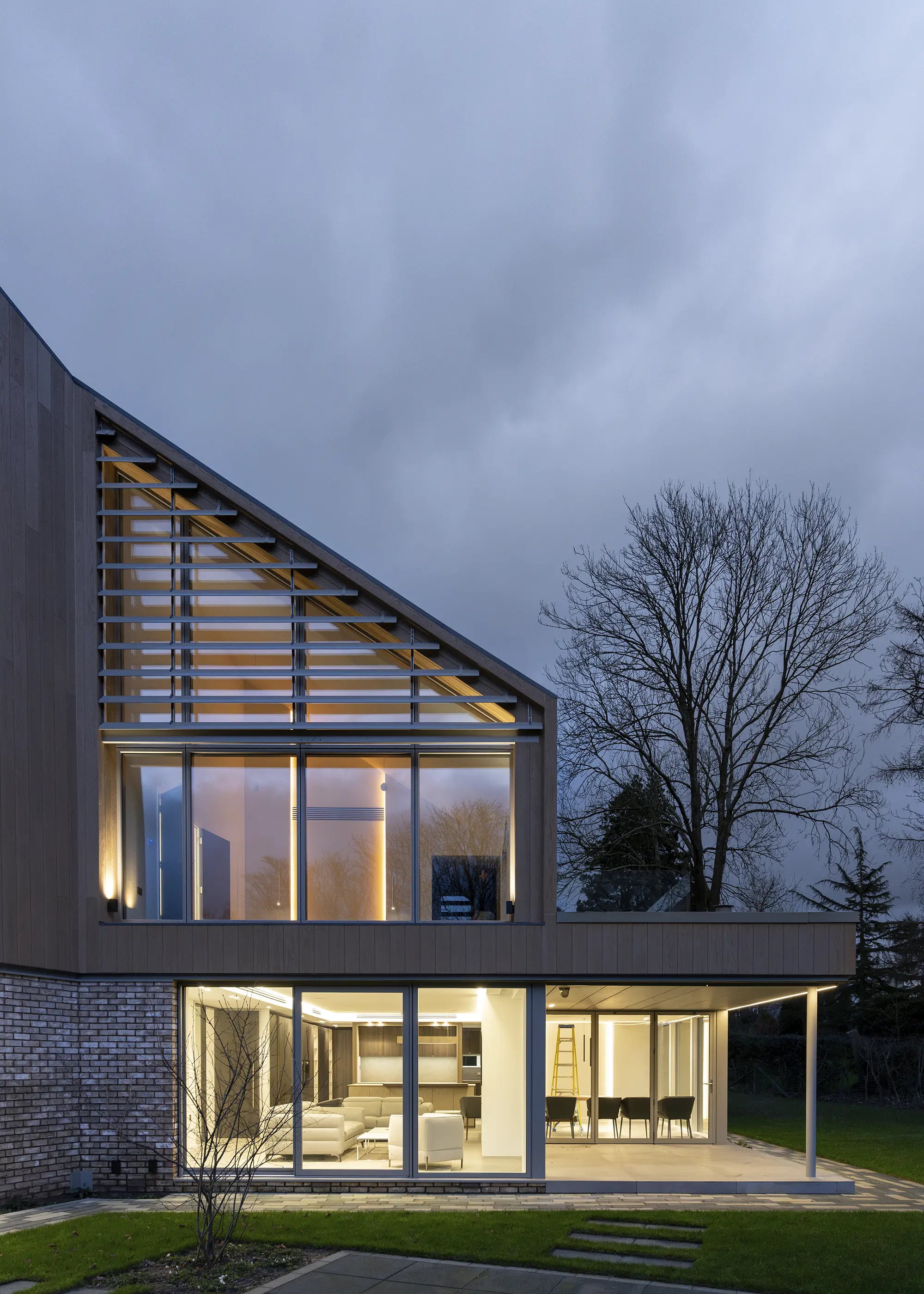
This home in Cheshire features a bespoke smart lighting system by Hestia Smart Living. An efficient smart lighting, audio and visual scheme was implemented, with remote access from across the property via touchpads
“Outdoor architectural lighting can add ambiance, highlight features and create depth, particularly when integrated with the home’s interior lighting and automation systems,” says Paul.
“Selecting a system that supports open protocols, like KNX with DALI-2 integration, enables comprehensive control over lighting and other building management functions. This scalability, combined with a user-friendly interface, ensures the lighting system is intuitive and adaptable, enhancing both indoor and outdoor living experiences.”
So, if you’re planning a self build, what should your cost expectations be for a fully integrated smart lighting system? “The budget range for a fully integrated smart lighting system for a new build or renovation depends on the size and layout of your home, and the level of customisation you want,” says Nic.
He suggests that for self builds, a basic smart lighting system for a standard five-bedroom home can cost around £15,000. Higher-end or custom systems can cost upwards of £25,000-£35,000. In terms of a renovation, he estimates that a mid-range lighting and electrical update for this kind of project might cost between £8,500-£14,500.
 |
Iain ShawIain looks after marketing, communications & systems at Brilliant Lighting, which includes the website, PR and project photography. Here he is answering your smart lighting FAQs. |
Apps now offer users the ability to make significant changes to their own systems without having to call on the dealers who installed them. It’s not a particularly exciting change, but it’s a massive improvement in the way people can use their own setup. We can continue to manage the system overall and our client can tweak things without needing an engineer to visit. DIY products have had this from the start; the professional systems are now catching up.
Smart lighting control can’t create magic on its own. We love lighting control – we’re the biggest Lutron dealer outside of London and it’s a huge part of our offering – but we understand its role is to support great lighting design, not give you great lighting. Smart control without good lighting is a huge waste of time, money and emotion. Don’t focus on the system, focus on the light.
Try to use multiple circuits of light together to do the work; don’t try and get a small number of circuits to do every job. For example, taking all your downlights in the ceiling and dimming them to 50% isn’t going to give you cosy, it’s going to give you dim. Create your cosy scene from circuits that are designed to perform that function, and then call them from your smart lighting app.
Also, don’t just rely on apps. We like to install keypads by the front door and internal doors, where you would expect a light switch. Those keypads might be really sophisticated, but they should present a simple view to the user of what they do. We use engraved, backlit keypads that make it clear what will happen when they are pressed. The apps are great but don’t always give the best user experience. People often prefer physical keypads by doors.